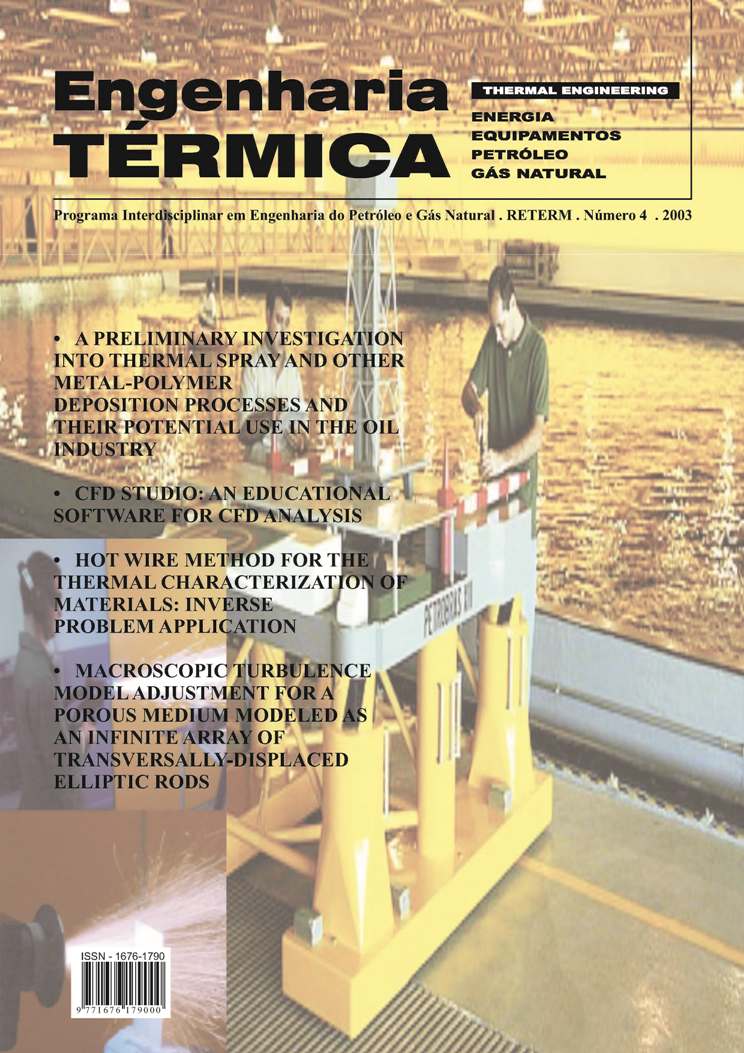HOT WIRE METHOD FOR THE THERMAL CHARACTERIZATION OF MATERIALS: INVERSE PROBLEM APPLICATION
DOI:
https://doi.org/10.5380/reterm.v2i2.3470Abstract
An experimental set-up of the hot wire method is presented. The present design allows the measurement of the temperatures at two different points on the heating wire with an acquisition system that performs measurements at a frequency of 1kHz with a 12 bit numerical converter. An analytical solution for the direct model for the time dependent problem of heat transfer is employed. It is based on the quadrupole method which basically consists in a transfer matrix approach which is possible through the use of Laplace transforms. It extends the electrical analogy of heat transfer problems using the notion of impedance, and allows to take into account the thermal behavior of the wire, as well as contact resistance and heat loss effects in a very simple straightforward way. In the identification process carried on the temperature experimental data relies on a sampling of the data that is logarithmically spaced in time. The initial guesses for the thermal conductivity values are obtained applying the well known and ideal model of the linear temperature evolution versus the logarithm of the time. These values are used to start up the algorithms that are applied in the minimization of the cost functional of the squared residues between measured and calculated temperatures. The precision of the estimates is assessed with the calculated confidence bounds obtained by the variance-covariance matrix at the converged solution.
Downloads
Published
How to Cite
Issue
Section
License
Direitos Autorais para artigos publicados nesta revista são do autor, com direitos de primeira publicação para a revista. Em virtude da aparecerem nesta revista de acesso público, os artigos são de uso gratuito, com atribuições próprias, em aplicações educacionais e não-comerciais.



